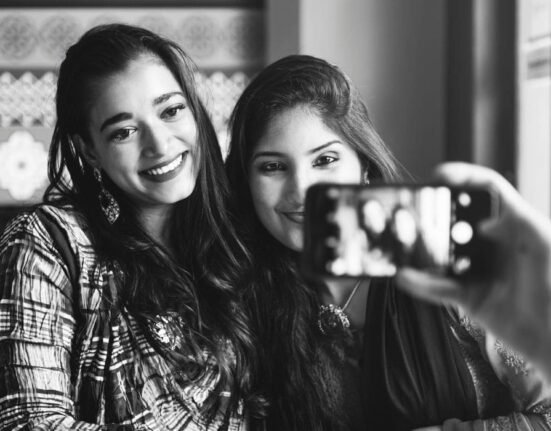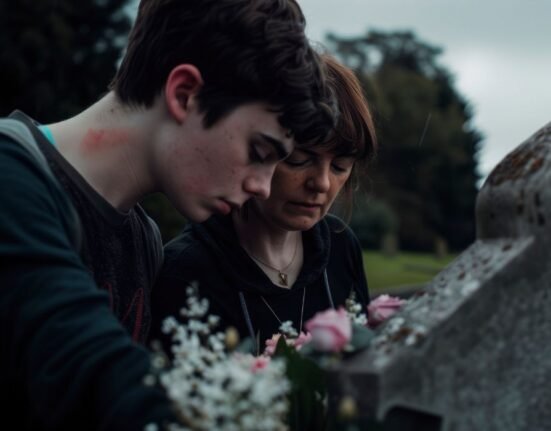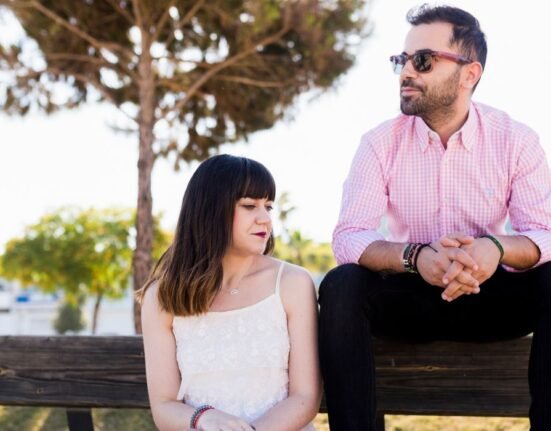I. The Triangular Theory of Love (Robert J. Stenberg)
The Triangular theory of love (Robert J. Stenberg) suggests that love can be understood as three components that together can be viewed as the three vertices of a triangle. We use the triangle as a metaphor, not as a strict geometrical figure. These three components are intimacy, passion and decision/ commitment. Each component holds a different aspect of love.
1. Intimacy:
refers to the feeling of closeness, connectedness and bondedness in a loving relationship. It essentially indicates those feelings in a relationship which gives rise to the experience of warmth in a relationship.
2. Passion:
It refers to the drives that lead to romance, physical attraction, sexual consummation and related phenomena in a relationship. This component indicates those sources of motivational and other forms of arousal that lead to the experience of passion in a relationship.
3. Decision/ commitment:
It refers, in the short term, to the decision to love a certain partner and in the long term, to the commitment to maintain that love.
The three components of love interact with each other for example, greater intimacy may lead to greater passion or commitment, and similarly, greater commitment may lead to greater intimacy. In general, the components are separable but interactive with each other. Although all three components are important parts of a relationship their importance may differ from one relationship to another, or over time within a given relationship
II. Colour Wheel Theory of Love (John Allen Lee):
The Canadian psychologist, John Allen Lee differentiates love between primary and secondary types. Within the primary type of love comes three types of love, which become the basis for the secondary type of love. He used several Greek words for love to portray different kinds that we come across.
The three basic kinds of love are:
1. Eros:
The word Eros is the symbol of passion, erotic and sexual and also symbolises the “modern romantic love” The level of intensity with this type of love is high, it is based on chemistry, pheromones and instinct. Falling in love, having the urge to share with our partner, to strengthen the bond and the amount of intimacy we have. This is reinforced by the feelings of lust and love.
2. Ludus:
Also called childish or playful love, Ludus comes from the Greek word game. It is seeing and interpreting love as a game. With Ludus comes flirtatious behaviour. Sex is seen as a sport, a way to be kept entertained. Most definitely not looking for commitment, having fun is the main motivator. As long as both parties maintain a no-strings-attached and uncomplicated relationship, it is fine. Yet, the desire for intimacy can often chase away the partner.
3. Storage:
Storage is the Greek word for natural affection, family love or the love between friends. This type of love is highly affectionate. The bond between parent and child. There is a strong necessity for loyalty. Within Storage, there are many responsibilities, duties and entitlements. Within relationships, Eros can be transformed into Storge. This change we see when a relationship tends to be a long-lasting one and the lover also truly becomes friends.
The secondary type of love is the combination of these three types of love.
Eros + Storge = Agape
Eros + Ludus = Mania
Ludus + Storge = Pragma
1. Agape:
Selfless, universal and unconditional love. When Agape love arises within a relationship, the couple is ready to face the most difficult obstacles. The relationship is based on an unbreakable commitment and the love is unconditional. Agape lovers see their partners as a blessing and will be willing to go to far lengths for their partners. Agape love can also arise when you are passionate about something. For instance, charity work and helping strangers, a love for nature and a love for religion or spirituality are these types of love.
2. Mania:
Mania is characterized by extreme highs and lows. A relationship you can compare to a roller coaster. In many ways, it can be stated to be the opposite of Agape. They want to live in extremes and continuously look for reassurance from their partners. They have the feeling of ‘needing’ their partner. Mania lovers can become obsessive, jealous and possessive or the complete opposite, extremely distant and reluctant.
3. Pragma:
Pragma is the practical and compatible love, convenience over romance. Passion and emotion take a step back and logic takes over. Important needs and desires get priority. To accomplish this, Praga lovers look at the background of their potential partners. Education, financial capabilities, religious beliefs and social status all play a role.
III. Mere Exposure Effect ( Robert Zajonc):
The mere exposure effect, discovered by Robert Zajonc(1968), refers to our tendency to like things that are familiar to us—that is, those things and people that we are exposed to most often. The mere exposure effect helps to explain propinquity, the idea that one of the main determinants of interpersonal attraction is physical proximity. Based on this experiment, there have been many studies that try to relate the link between repeated exposure and attraction.
In One study, they investigated student’s perceived affinity toward a Confederate woman in their large (200 students) college course. Four women similar in appearance posed as students in a large college classroom, each attending a different number of class sessions (0, 5, 10, or 15 sessions). Students had no reason to interact with these women, and there was nothing unusual about them that would capture anyone’s attention.
At the end of the semester, the students were shown pictures of the women and asked questions that obtained scores for perceived familiarity, similarity, and attractiveness. The women who attended more class sessions were perceived overall as more attractive. Students even believed that they would be more likely to become friends with the women who attended more classroom sessions.
IV. Attachment Theory (John Bowlby):
Bowlby believed that the tendency for primate infants to develop attachments to their progenitors was the result of evolutionary pressures because attachment behaviour would determine the child’s survival in the face of danger.
The most important tenet of attachment theory is an infant needs to develop a relationship with at least one parent for the child’s successful social and emotional development, and in particular for learning how to regulate their feelings. Any parent is likely to become the principal attachment figure if they provide most of the child care and related social interaction. In the early stages, researchers limited attachment theory to childhood relationships. Now, experts widely recognize it as a significant determinant of adult attachment. Attachment applies to adults when adults feel close attachment to their parents, their romantic and platonic partners and their friends.
Four different attachment classifications have been identified in children:
1. Secure attachment:
Occurs when children feel they can rely on their caregivers to attend to their needs for proximity, emotional support and protection. It is considered to be the most advantageous attachment style.
2. Anxious-ambivalent attachment:
Occurs when the infant feels separation anxiety when separated from the caregiver and does not feel reassured when the caregiver returns to the infant.
3. Anxious-avoidant attachment:
Occurs when the infant avoids their parents.
4. Disorganized attachment:
Occurs when there is a lack of attachment behaviour.
The attachment style in our childhood determines our adult relationships.













Leave feedback about this